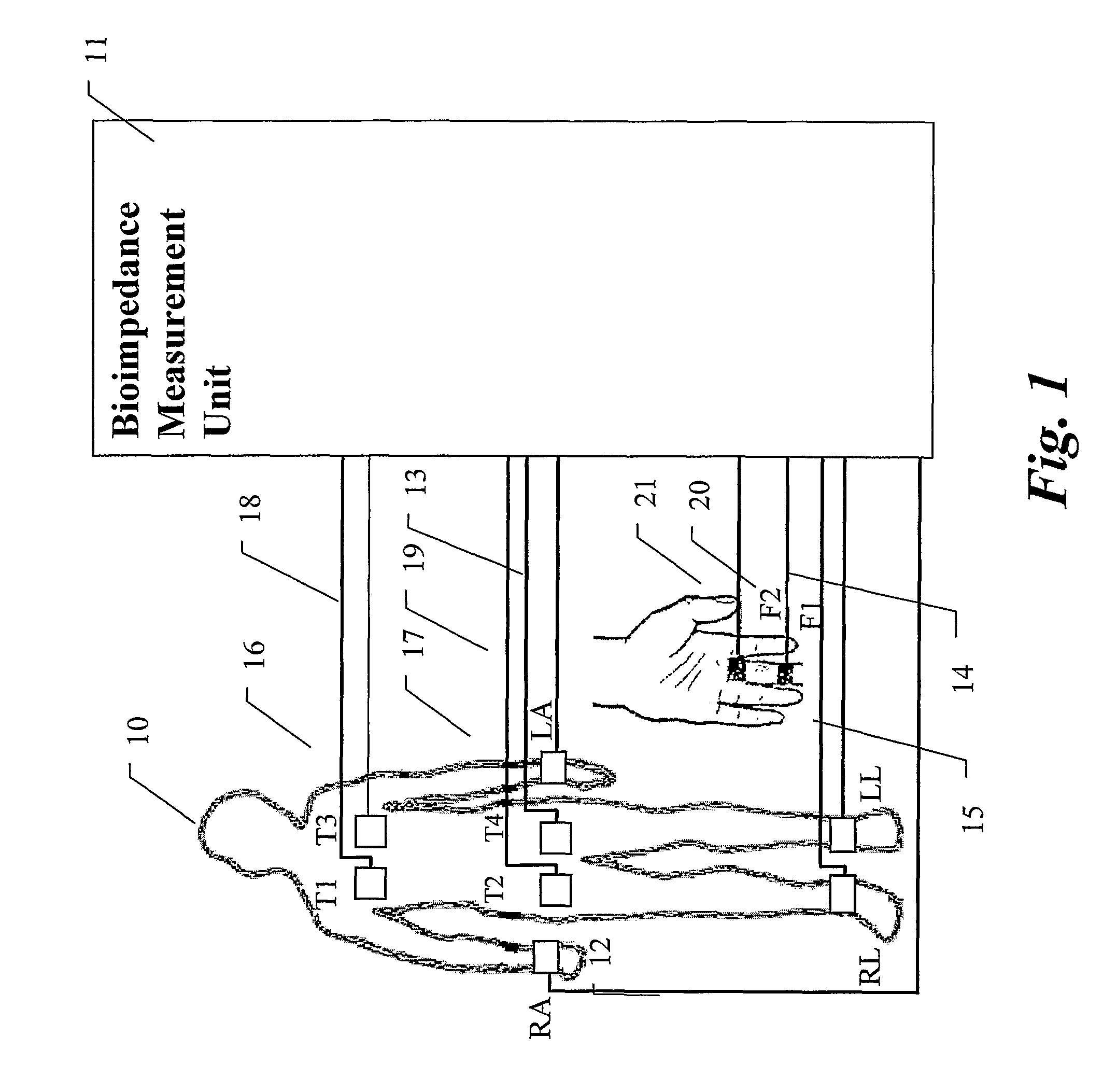Noninvasive multi-channel monitoring of hemodynamic parameters
a hemodynamic parameter and multi-channel technology, applied in the field of non-invasive monitoring of hemodynamic parameters of organs, can solve the problems of insufficient use of hemodynamic parameters of separate bodily sections, patient's substantial pain and discomfort, and physician's relatively complicated procedures, and achieve accurate assessing pulmonary systematic and peripheral blood flow. , the effect of high stability
- Summary
- Abstract
- Description
- Claims
- Application Information
AI Technical Summary
Benefits of technology
Problems solved by technology
Method used
Image
Examples
Embodiment Construction
[0091]The present invention provides a noninvasive method and apparatus for the monitoring of hemodynamic parameters in different parts of the human body simultaneously, based on measurements of electrical impedances. The invention provides an improved measurement scheme which is based on a unique electrode arrangement and an innovative electrical model, which are combined to obtain accurate impedance measurements of distinct body sections by considering the excitation current distortion components which are due to electrical currents flowing in the section of the measured body which are not subjected to the actual measurement. In this way the accuracy of the measured basal impedance Z (basal resistance R) and ΔZ (ΔR) is substantially increased, and consequently the accuracy of the calculations of the hemodynamic parameters is also substantially increased.
[0092]In the present invention, the source electrodes are situated on the distal extremities of the measured body. This is simila...
PUM
 Login to View More
Login to View More Abstract
Description
Claims
Application Information
 Login to View More
Login to View More - R&D
- Intellectual Property
- Life Sciences
- Materials
- Tech Scout
- Unparalleled Data Quality
- Higher Quality Content
- 60% Fewer Hallucinations
Browse by: Latest US Patents, China's latest patents, Technical Efficacy Thesaurus, Application Domain, Technology Topic, Popular Technical Reports.
© 2025 PatSnap. All rights reserved.Legal|Privacy policy|Modern Slavery Act Transparency Statement|Sitemap|About US| Contact US: help@patsnap.com



